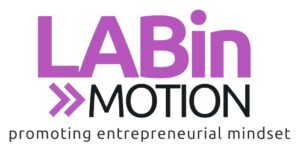The need for data scientists has never been greater. However, the shortage of qualified individuals to fill the high demand is a problem confronting many organizations. Data scientists have become an integral part of businesses as they help collect, manage, cleanse and analyze data from various sources to find correlations or patterns. This can lead to companies making more informed decisions about their business operations and marketing strategies, resulting in more revenue and profits.
Let’s take a look at some of the reasons behind the shortage of data science resources in India and abroad.
What is Data Science?
Data science is the process of understanding and analyzing data to extract knowledge. It includes organization, storage, management, analysis, and data visualization to make it more understandable. Data science has many applications, including business intelligence for marketing or finance departments.
Data can be analyzed through predictive analytics, which uses algorithms to forecast future events based on past performance. This type of analysis can predict customer behavior with respect to buying patterns or forecasting epidemics by monitoring disease trends over time.
Data scientists are often experts in computer programming languages like Python or R and statistical software packages, such as SAS or SPSS, to apply their skills in analyzing large datasets containing terabytes of information.
Reasons For Talent Shortage
High Barrier To Entry
Data scientists are in high demand, but the barriers to entry is also very high. Data scientists need a strong background in math and computer science and experience with machine learning and statistics. In addition to these technical skills, data scientists must know how to communicate their findings effectively because they often work with non-technical stakeholders, such as marketing teams or investors, who don’t understand statistical concepts.
All this means that there’s a shortage of qualified data scientists available for hire. Without enough trained professionals on staff, it becomes difficult to launch new products quickly or innovate at the same rate as other companies.
High Demand For Data Scientists
The shortage of data scientists has become an issue in the last few years due to high demand and less supply. This phenomenon is most prevalent in large companies that require a lot of information for their businesses but cannot find enough qualified professionals because there are too many other businesses vying for them.
There are various reasons why this is happening, including higher salaries offered by these big companies and the lack of accessible educational programs for this profession. These two factors make it difficult for smaller businesses to compete with larger corporations when hiring new employees. However, there have been some steps taken recently by governments and private institutions alike, like the Indian Institute of Technology (IIT), Delhi, which offers postgraduate courses on analytics and data science to combat this problem.
Rapid Upskilling Requirements
The number of data scientists in the US has grown, and many people are pursuing the same job while employers are demanding more and more qualifications from their applicants. Many schools are now offering degrees in analytics, and companies like Google offer free online courses on machine learning. Still, it is difficult for those without programming experience to join this field since most new hires need at least 2-3 years of work experience before contributing meaningfully to projects.
An MBA degree seems to be a common requirement for being hired as a data scientist these days. Thus, rapid upskilling requirements have caused a shortage of skilled professionals in the industry today. Compared with other computer science and engineering professions – such as software developers and mathematicians – jobs in data science have also seen some of the highest year-over-year wage increases.
How Is the Industry Responding?
While there’s a shortage of data scientists across industries, healthcare has been particularly affected by this issue because it relies heavily on predictive analytic models that require data scientists to produce insights about patients’ needs. The demand for data science professionals isn’t expected to slow down anytime, and as the recent shortage of data scientists has shown, there is a need for more people with coding skills.
The industry has responded to this by making it easier for non-coders to learn how to code. Many types of coding platforms offer free or inexpensive courses. Code School offers full courses available at no cost, and others only charge per course. These options make it easy for anyone who wants to learn how to code because they can find an option that fits their budget.
Solutions For Talent Shortage
The market for data scientists is hot. The Bureau of Labor Statistics predicts that the demand for data scientists will rise 28% by 2026, with a similar increase in median salary to $133,600. While this may be good news for qualified candidates, it makes it harder than ever to find talent and fill open positions at companies across all industries.
Luckily, there are many ways companies can attract top-level talent – from using clear job descriptions to offering competitive salaries and benefits packages – as well as creative employee engagement initiatives that encourage professional development and provide work/life balance. In addition to attracting potential employees, these programs help improve retention rates by supporting the needs of current employees while strengthening company culture.
Bottom Line
In this article, we discussed how the shortage of data scientists has impacted the industry. The shortage of qualified data scientists has been a major issue for many industries. The number one reason for an acute need for data scientists is that these professionals have become integral members of businesses across all sectors- from finance, marketing, healthcare, or retail.
Data science skills are in high demand, and the supply is low due to factors like high barriers to entry (requiring extensive knowledge in coding) and fewer people who can code (less supply). This lack of resources leads to massive upskilling requirements, making it difficult for companies to find talent.





